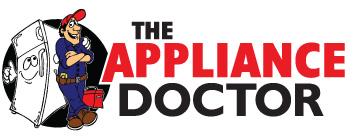Hot days, warm nights: summer is nearly here, which means its time for swamp cooler setup. As the temps ramp up, you might be finding your residence is now in need of cooling down. If your place is equipped with a swamp cooler, you may be tempted to start it up… but may be unsure how to do so, or who to call. Luckily for you, we at the Appliance Doctor know all about swamp cooler start up! Read on how to learn the process of how to properly start up your swamp cooler so you can stay cool this summer.

Starting Your Swamp Cooler
Before we get into swamp cooler startup it’s important to understand that swamp coolers work differently from standard refrigerated air systems, or AC units. Whereas AC units transfer heat out of a house by use of refrigerants (and dry out air), swamp coolers cool air by passing it over a wet pad. The water evaporates into the air, creating a breeze and cooling the interior, while also creating some degree of humidity – especially ideal in Grand Junction’s arid climate. To function properly, these pads must remain constantly damp. A small pump provides water through the cooler while a fan circulates the cooled air through the unit and your home. Accordingly, there is an on/ off switch for the pump and a hi/ low button for the fan.
Now that you know how swap coolers work you may be tempted to just flick the “on” switch and adjust the fan speed, but not so fast. Before you actively start the cooler you will want to clean and inspect it first. Rather have a professional clean and startup your swamp cooler? No problem, The Appliance Doctor is certified to service and repair all HVAC equipment, click here to learn more.
Clean It Out
Give your swamp cooler a look over and remove any debris such as dust, dirt, leaves, twigs, etc. This applies even if you covered your swamp cooler over the Winter when not in use. Neglecting to clean your swamp cooler upon startup hinders how effectively it will run. At the bare minimum, remove any visible debris on the exterior. Ideally, you’ll also want to clean the inside of the unit by removing the side panels, which are generally easy to remove. If possible, use a shop vac to further clean, and remove any hard water buildup. Make note of which panels go where for easy reassembly. If you find you’re unsure of or uncomfortable tinkering with the cooler, give us a call at 970-773-1000. Our certified technicians will get your swamp cooler up and running in no time.
Replace the Swamp Cooler Pads
The basic rule is that cooling pads should be replaced once a year, and more often for swamp coolers that experience heavy use. Consult the unit’s manual first to see which type of water pad you’ll need (either fiber pad or rigid sheet pad), and note the size needed. Lacking a manual or just unsure what exactly the cooler needs? Call us, and we’ll make sure your cooler gets the proper replacement parts, whatever they may be.
Reconnect the Water Line and Inspect for Leaks
Reconnect the water line to the cooler and tighten with pliers or a wrench. And before you turn the water on, inspect for any leaks. Check the water line, drain plug, and water pan. If you note a leak around the drain plug, tighten with pliers. Also make sure the drain plug is set within the water pan. Otherwise, you’ll have water everywhere.

Inspect the Rotating Belt
Check the rotating belt that runs the motor, and if there’s any cracks or excessive wear, replace it. Check also that the belt has adequate tension. Consult the cooler’s manual for which type of belt is needed, or reach out us at The Appliance Doctor if you need help during any step of the process.
Clean the Water Pan
Use warm water and mild soap to clean the water pan that is located at the bottom of the cooler. Rust can indicate leaks, so once again check for any leakage. To remove rust stains, scrub with steel wool, then refill the pan.
Test Run the Swamp Cooler
With the swamp cooler panels still off, plug in the power supply to test run the cooler. Switch on the water pump and observe the rate of flow, noting how well the pads saturate. To run effectively, a swamp cooler must have the entirety of the pads saturated. If the water flow is sluggish or only part of the pads is saturated, the cooler will run poorly. A slow rate of water circulation can indicate a faulty water line or blockage. Also observe the motor and fan – are both running smoothly?
Reassemble the Panels
Once you’ve cleaned and inspected your swamp cooler and all looks well, close the unit up by placing back the panels, securing them with their corresponding latches or clips. Set the switch to low cool to run your cooler. Now you’re all set to stay cool and comfortable this summer.

Important Safety Reminders
Rooftop Swamp Cooler? Call Us
If you feel at all uncomfortable trying to access a swamp cooler located on a roof, call us (970-773-1000). We have plenty of experience servicing swamp coolers. If you have worked on your rooftop swamp cooler before, be sure your ladder is properly secured for best safety, and have all necessary tools with you, to cut down on ladder trips.
Avoid Electrical Hazards
Water and electricity do not mix! Don’t risk electrocution or starting a fire: always make sure the cooler is completely turned off and that there is no electricity running through the unit. Once again, if you don’t feel comfortable prepping your swamp cooler, call us. Your safety is of our most utmost concern when it comes to operating and installing any appliance.
Water Damage Risks
The final thing to note is that if a swamp cooler startup is completed improperly or without enough experience looking for issues, leaks can occur. One of the main causes of home water damage in Grand Junction is broken swamp cooler lines, or even small leaks. Changing a swamp cooler isn’t all that hard or time consuming, but having a major water loss – should it occur – is a huge problem. It’s always worth the small fee to hire a professional to make sure you are covered!

Recent Comments